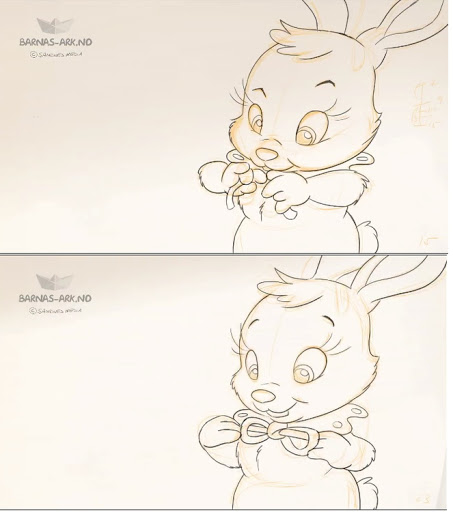http://www.cartoonbrew.com/music-vid...wegian-tv.html
And also on the TVP Animation Community Forum , where they report that the animation and coloring was done with TVP Animation:
http://www.tvpaint.com/forum/viewtopic.php?f=23&t=4750
So the animation is actually hand-drawn, but paperless , drawn in TVP Animation using Wacom tablets. BG's were painted in Photoshop. (although they could have used TVP Animation to paint the fully-rendered BG's as well)
The director , Hans Jørgen Sandnes , writes:
Trailer for the television series:
Quote:
| "...based on the songs of famed Norwegian singer/songwriter Alf Prøysen (1914 – 1970). The series is hand-drawn, made in-house by me and my five collegues. The episodes are short “music-videos” following Prøysens original recordings. We’re very passionate about our work, trying to master the medium of traditional 2D animation.” |
Trailer for the television series:
Line test of a scene animated paperlessly in TVP Animation:
Making-of progression video showing line test to final color:
It's interesting that for publicity purposes in the making-of video (above) they have taken steps to disguise the digital origins of the drawings by adding some fake "flipping paper" effects to the animation.
I think I understand why this is done for the general public consumption: the minute you tell non-animation people "we used a digital program to do the animation" many people have this crazy idea stuck in their head : "ah-ha, the computer does it all" , as if the someone simply types in a command and pushes a button , then the computer program animates the scene. Whereas people still understand that if something is hand-drawn an artist is responsible for creating it.
It is difficult for many people to grasp the idea that there can be hand-drawn animation made on a computer , which is virtually the same process as hand-drawn animation on paper, except the lines are drawn directly into a program like TVP Animation using a wacom tablet, instead of drawn on paper and scanned/photographed.

Hand-drawn , in TVP Animation.
-------------
Some additional comments from the director/lead animator, Hans Jorgen Sandes, were posted on the TVP Animation Community User Forum:
http://www.tvpaint.com/forum/viewtopic.php?f=23&t=4750
Quote:
| I'm so glad you're using this on the TVPaint page. Because, it's ALL sketched, animated and coloured in TVPaint. The backgrounds are PhotoShop, and the composite is in AppleMotion. We're working on the subject of painting the backgrounds in TVP as well. The composite is very minimal, and AppleMotion works great with FinalCut. http://barnas-ark.blogspot.com/2010/08/hos-oss.html Since others are so interested in our process, I will make a post on how we're working. I'll also include how the animation is actually done in the TVP software. I'll post it on your forum and my blog. Anyway, feel free to share this information : ) Looking forward to hear from you again! All the best, Hans |
As promised the lead animator/ director of this piece, Hans J. Sandnes has provided a behind-the-scenes glimpse at their work process using TVP Animation at his studio Sandnes Media.
He writes:
"We're a small team: an animator, an inbetweener, a background-artist, a compositor , and a producer. Using TVPaint means we're still making hundreds of unique drawings. We're sketching, erasing and re-doing drawings. But we don't have to spend time on scanning the drawings, numbering them, line-testing them and archiving them. In a way, TVPaint helps us doing what we like. And takes away the unnecessary steps.
Here's an in-depth look at how we do it. " :
http://barnas-ark.blogspot.com/p/paperless-animation.html

